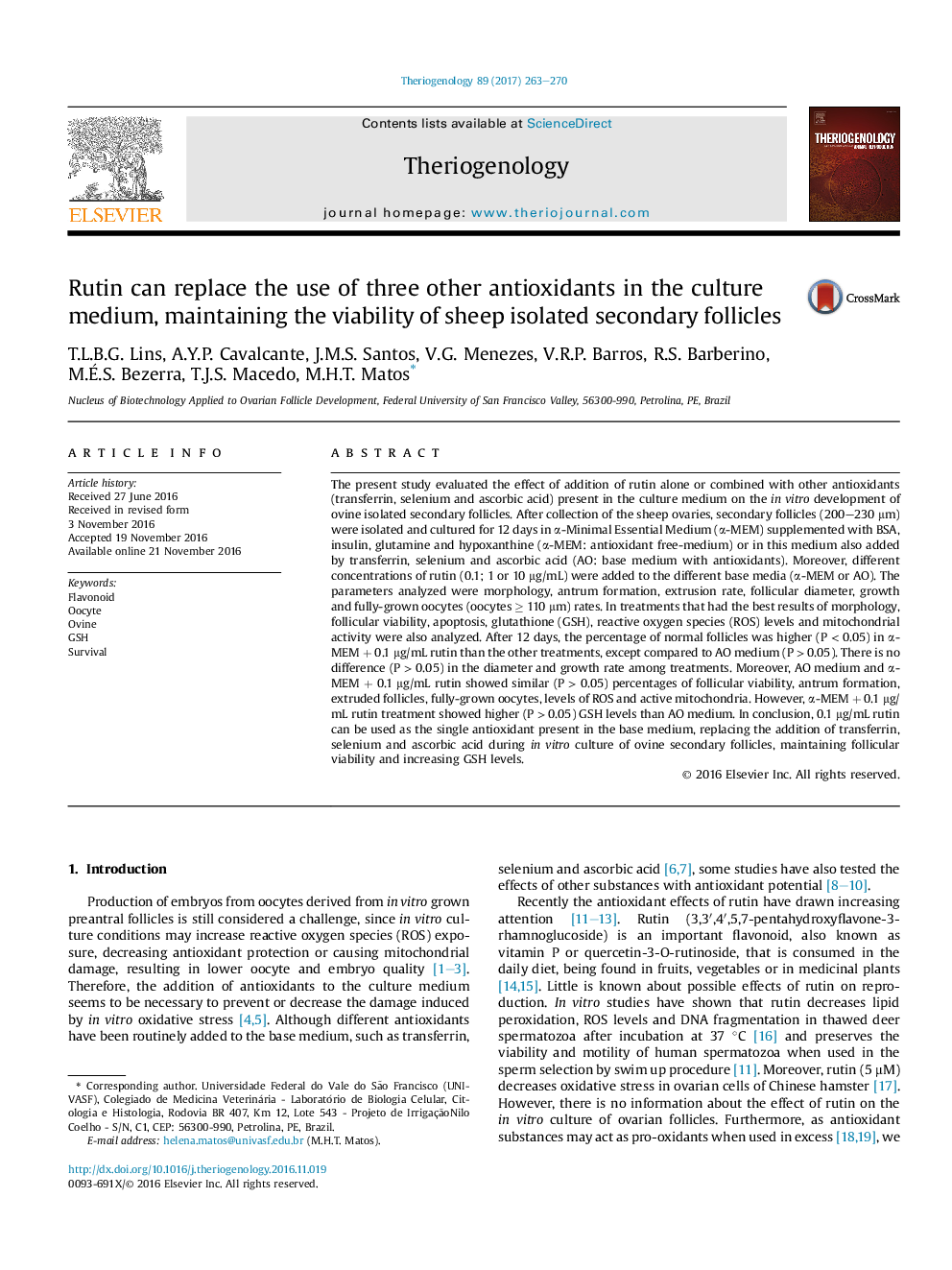| Article ID | Journal | Published Year | Pages | File Type |
|---|---|---|---|---|
| 5523453 | Theriogenology | 2017 | 8 Pages |
â¢Rutin maintains ovine follicle morphology and inhibits apoptosis.â¢Rutin improves intracellular GSH levels after culture.â¢Rutin can replace the use of other three antioxidants in the medium.
The present study evaluated the effect of addition of rutin alone or combined with other antioxidants (transferrin, selenium and ascorbic acid) present in the culture medium on the in vitro development of ovine isolated secondary follicles. After collection of the sheep ovaries, secondary follicles (200-230 μm) were isolated and cultured for 12 days in α-Minimal Essential Medium (α-MEM) supplemented with BSA, insulin, glutamine and hypoxanthine (α-MEM: antioxidant free-medium) or in this medium also added by transferrin, selenium and ascorbic acid (AO: base medium with antioxidants). Moreover, different concentrations of rutin (0.1; 1 or 10 μg/mL) were added to the different base media (α-MEM or AO). The parameters analyzed were morphology, antrum formation, extrusion rate, follicular diameter, growth and fully-grown oocytes (oocytes â¥Â 110 μm) rates. In treatments that had the best results of morphology, follicular viability, apoptosis, glutathione (GSH), reactive oxygen species (ROS) levels and mitochondrial activity were also analyzed. After 12 days, the percentage of normal follicles was higher (P < 0.05) in α-MEM + 0.1 μg/mL rutin than the other treatments, except compared to AO medium (P > 0.05). There is no difference (P > 0.05) in the diameter and growth rate among treatments. Moreover, AO medium and α-MEM + 0.1 μg/mL rutin showed similar (P > 0.05) percentages of follicular viability, antrum formation, extruded follicles, fully-grown oocytes, levels of ROS and active mitochondria. However, α-MEM + 0.1 μg/mL rutin treatment showed higher (P > 0.05) GSH levels than AO medium. In conclusion, 0.1 μg/mL rutin can be used as the single antioxidant present in the base medium, replacing the addition of transferrin, selenium and ascorbic acid during in vitro culture of ovine secondary follicles, maintaining follicular viability and increasing GSH levels.
